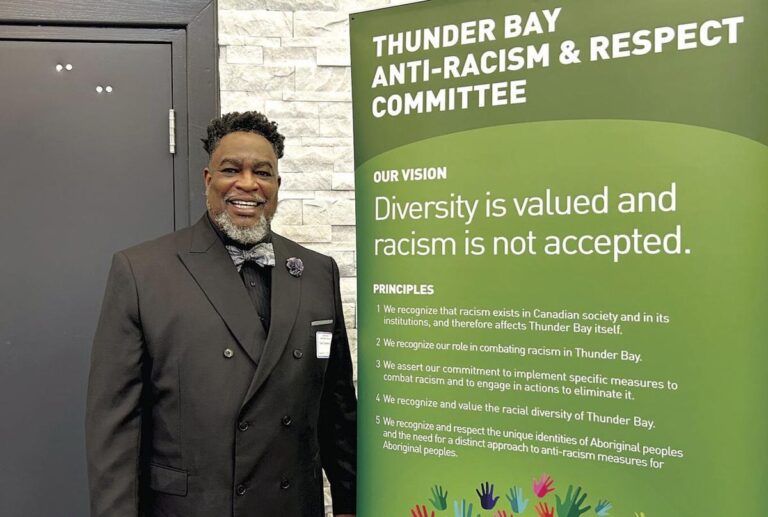Examining Sexism and Racism in Harris’s Political Loss
Understanding the Role of Sexism and Racism in Harris’s Political Downfall
When we think about the political landscape, it’s not just about policies or party lines—it’s also a complex web of social dynamics, historical context, and, unfortunately, discrimination. Recently, we’ve seen how sexism and racism can collide to impact political careers, as was the case with Kamala Harris. In this article, we’re diving deep into the nuances of her political journey, especially focusing on the sexism and racism she encountered, and how they played a significant role in her recent electoral loss.
The Intersection of Identity and Politics
To understand what happened to Kamala Harris, it’s crucial to first appreciate the intricate dance of identity in politics. Harris is the first woman of South Asian and African American descent to be elected vice president of the United States. She broke through several barriers, but, as the saying goes, “with great power comes great scrutiny.” The spotlight does not merely illuminate; it also magnifies flaws and biases that might otherwise go unnoticed.
Let’s think about it this way: imagine a lighthouse in a stormy sea. While its purpose is to guide ships to safety, the light also exposes every crevice of the rocky coast. Harris’s identity became both her guiding light and her risky shoreline.
The Curtain of Discrimination
It’s essential to recognize that discrimination in any form—whether it be race, gender, or other identities—creates significant hurdles. For Harris, arriving at the apex of her political career involved dodging the proverbial bullets of biases. While some argue that her loss was strictly a matter of electoral politics—campaign strategy, voter turnout, etc.—discrimination likely played a substantial role.
Sexism: A Still-Persistent Barrier
Despite advancements in gender equality, sexism continues to be a beast lurking beneath the surface of politics. Female politicians often face challenges male counterparts don’t: constant scrutiny over their appearance, maternity, and emotional responses. Harris, like many other female politicians, had to navigate a landscape littered with sexist commentary.
Let’s take a moment to imagine a classic seesaw: on one side, men dominate traditional roles; on the other, women are constantly trying to balance, proving they’re equally competent, if not more so. But with Harris, there was an added layer of complexity—her ethnicity.
Racism: The Unseen Force
Racism also rears its ugly head. Although America prides itself on embracing diversity, racial bias is still woven into the fabric of the political landscape. Harris faced significant scrutiny not just as a woman, but as a woman of color. Some voters harbored underlying prejudices that they perhaps weren’t even aware of, viewing her less favorably than white male counterparts.
This intersectionality complicates things. Think back to that lighthouse: when you mix biases of race and gender, it raises the potential for harsh storms, as seen in the challenges Harris faced.
The Road to the Loss
As we delve into how these issues directly influenced Harris’s political journey, it’s essential to look at several factors.
Campaign Missteps
Like any political campaign, Harris’s had its ups and downs. Early criticisms of her campaign strategy, including messaging and outreach to the electorate, were magnified in the context of her identity. A white male candidate offering similar messaging might not have faced the same cutthroat analysis.
Moreover, many folks ask: what could she have done differently? That’s a tough question! The truth is, the political playing field has never been level, particularly for women of color.
Media Scrutiny
If there’s one constant in the world of politics, it’s media scrutiny. The media coverage received by Harris demonstrated stark contrasts when compared to her male and white counterparts. Studies show that female politicians are often portrayed in ways that emphasize their appearance or emotional responses rather than their policies or acumen.
Think about it: if a male politician seems passionate during a debate, he’s seen as charismatic. If a female politician expresses that same emotion, she might be called “hysterical,” or worse. Harris thus faced a continuous barrage of media portrayals that were colored by both race and gender biases.
Voter Perceptions and Polling
Voter perception plays a crucial role in election outcomes. Research shows that biases affect how voters perceive candidates—especially when those candidates have identities outside the traditional mold. Harris’s innovative policy proposals and energetic campaign were overshadowed by discriminatory perceptions that influenced her chances with voters.
This leads us to the question: how much of this was due to outright bias versus valid criticism of her policies? The line is often blurry, influenced heavily by the filtering lens of bias.
The Impact of Allyship and Support
With all that said, it’s also essential to recognize the voices in support of Harris during her campaign. Political allies and influential figures stood beside her, breaking down barriers in their way. However, this support isn’t a one-size-fits-all solution to the challenges women of color face in politics.
Just like a team in football works together, these allies play roles like blockers, receivers, and quarterbacks. They can help Harris gain much-needed yardage, but the opposition team (the biases and discrimination) can still score on any play.
Conclusion: Moving Towards Change
Kamala Harris’s political loss is a stark reminder of how deeply ingrained sexism and racism can influence perceptions and decisions in politics. Although challenges remain, recognizing these issues is the first step toward creating a more equitable landscape for future candidates.
The road ahead is long, but it’s paved with the awareness that change is necessary. To create a fair playing field for all candidates, we must continue to challenge the biases that impede progress.
Let’s strive to foster a political environment that values diversity—not just in the candidates running but also in the stories, experiences, and yes, the challenges surrounding them.
Frequently Asked Questions
1. Why does sexism and racism affect political candidates?
Sexism and racism can skew perceptions, influencing how voters view candidates’ qualifications, competence, and emotional responses, thus unfairly affecting their electoral success.
2. How can political campaigns better address bias?
Campaigns can address bias through diverse hiring practices, proactive messaging that speaks to discrimination, and training for staff on cultural competency.
3. Are these biases exclusive to the United States?
No, sexism and racism are global issues, affecting political candidates in various cultures and nations differently.
4. How can voters make more informed choices?
Researching candidates’ backgrounds, policies, and contributions while critically examining their biases can empower voters to make informed decisions.
5. What role does media play in shaping perceptions of candidates?
Media outlets can reinforce or challenge biases by how they portray candidates, focusing on attributes like emotional responses or appearance rather than their policies and capabilities.






